 Image search results - "railway" Image search results - "railway" |

Seibu Ikebukuro Line train station entrance at Ikebukuro, Tokyo. It takes about 90 min. from Ikebukuro to Yokoze Station via Tokkyu express train. Cheaper trains take 2 hours.
|
|

Ohmi Railways Toyosato Station. MAP
|
|

Inside Toyosato Station.
|
|
|
|
|
|
|

Toyosato Station platform.
|
|
|
|
|

Ohmi Railways Amago Station, Kora town's only train station. It is parallel to the shinkansen bullet train tracks on the left.
|
|

Ohmi Railways Amago Station platform. The station building (community house) can be seen ahead on the left.
|
|

The Amago Station building is called the Amago Community House. Built in Nov. 2003, it's still quite new, but looks under used.
|
|

Entering Ohmi Railways Amago Station which is also a community house.
|
|

Inside Ohmi Railways Amago Station
|
|

Ohmi Railways Amago Station front view. 尼子駅
|
|

Ohmi Railways Amago Station side view
|
|
|

Ohmi Railways Echigawa Station. The station building, named Ruburu Echigawa, has a tourist information counter and exhibition gallery.
|
|

Ohmi Railways Echigawa Station platform.
|
|

Ohmi Railways Echigawa Station platform.
|
|

Ohmi Railways train at Echigawa Station.
|
|

Parallel to Echigawa Station is the elevated shinkansen tracks.
|
|

Ohmi Railways Echigawa Station
|
|

Ohmi Railways Echigawa Station platform.
|
|

Railway crossing
|
|

Ohmi Railway track
|
|

Ohmi Railway track
|
|

Ohmi Railways Museum at Hikone Station east exit.
|
|

Ohmi Railways trains on display
|
|
|
|

Inside Ohmi Railways Museum, a pantographThis museum in Hikone closed and reopened inside Yokaichi Station in Higashi-Omi.
|
|

Ohmi Railways Museum display panels
|
|

Inside Ohmi Railways Museum, rail gauges.
|
|
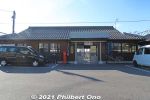
Ohmi Railways Hino Station building was completey renovated in 2017. Very impressive job. Other structures were also renovated including a small railway museum. Renovations were completed by May 2020. 近江鉄道 日野駅
|
|
|
|
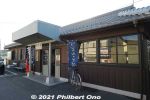
The building is now earthquake-resistant and painted dark brown. It now has a community space for a cafe, tourist information, and waiting room for passengers.
|
|
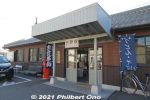
The canopy over the entrance was also renovated. It is supported by entasis columns.
|
|
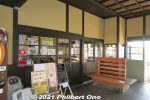
Hino Station's entrance hall. Not so many seats here, but there are benches on the platform. You can also wait inside the cafe on the left.
|
|
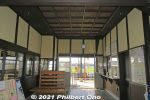
The ticket window used to be on the left corner. Now it's in the right corner. The exit goes to the train platform. The latticed ceiling came from the station's VIP room which was on the right side of the building.
|
|
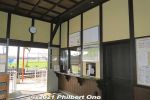
Ticket window on the right (closed).
|
|
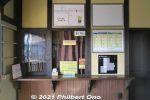
Ticket window (closed). This is new.
|
|
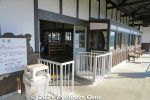
Turnstile
|
|
|
|
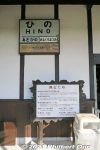
Old Hino Station sign has been in use since the Showa Period (ended in 1989). Displayed on train platform No. 1.
|
|
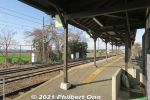
Hino Station train platform.
|
|
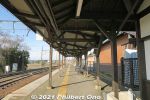
On Hino Station's train platform No. 1. Original wooden columns still usable are retained.
|
|
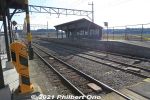
Hino Station has three sets of railway tracks, very rare. The unused middle track is vintage, made by Barrow Steel from the UK. Train platform No. 2 (for Yokaichi/Maibara) across the tracks has a roofed benches also renovated.
|
|
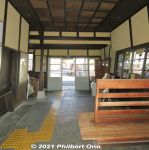
Entering the train building from the platform. Exit ahead.
|
|

Nanairo cafe menu.
|
|
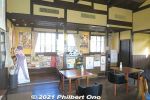
Hino Station now has a nice community space named "Nanairo" that serves as a cafe, tourist information space, and waiting room for passengers. Tourist pamphlets are on the left.
|
|
|
|
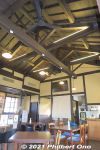
Nanairo cafe has a Western-style truss ceiling from the Taisho Period.
|
|
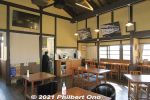
Friendly ladies wait on you for the food or drink. The clock seen on the right was actually used in the train station office.
|
|
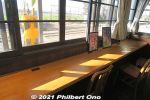
Counter seating has a view of the train platform.
|
|
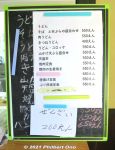
Cafe menu. Low prices. Udon, soba, and teishoku complete meals.
|
|
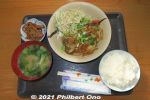
My teishoku lunch.
|
|

Old ticket window and counter have been retained.
|
|
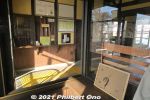
Old ticket window.
|
|
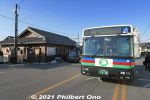
Outside the station is the bus stop for Omi-Hachiman Station.
|
|
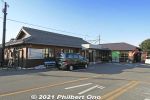
Hino Station (left) and the smaller building on the right used to be the tourist information office. It's now the Hino Station Railway Museum. 日野駅と日野駅鉄道資料展示室
|
|
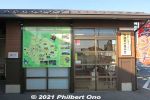
Hino Station Railway Museum. 日野駅鉄道資料展示室
|
|

About the entire Hino Station being a "Railway Museum."
|
|

Inside Hino Station Railway Museum. History of the station on panels, and old train and station-related artifacts. No English captions.
|
|
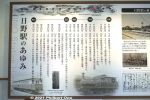
Chronology of the history of Ohmi Railways (founded in 1896) and Hino Station (first built in 1900).
|
|
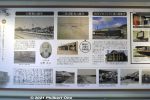
Upper left is a photo of Hino Station's opening day. The back of the station building can be seen. The building was rebuilt in 1916.
|
|
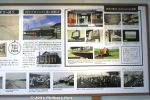
Remnants of the old days still remaining in the renovated Hino Station.
|
|
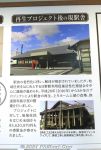
During the renovation, the entire train station building was jacked up to reinforce the foundation against earthquakes.
|
|
|
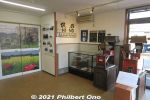
Many of the old artifacts on display can only be recognized or understood by hardcore train fans and people who worked at a train station. It's quite specialized.
|
|
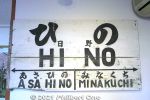
Old Hino Station signage.
|
|
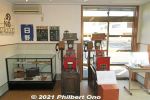
The red instruments are signalling block instruments for preventing collisions between trains. (タブレット閉塞器)
|
|

Implements used by Hino Station staff. Lower left is a paper ticket holder. Preprinted tickets were organized according to the destination.
|
|

L-R: Holder for rubber date stamps used to stamp the date on the ticket. Dating machine to imprint the date on the ticket. Clippers to cutout a small square on the ticket when boarding the train. Magneto telephone with a crank.
|
|
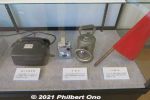
Magneto telephone with a crank (磁石式電話機), signal light, and red signal flag to signal the train.
|
|

On the left are old flyers advertising local businesses in Hino while mentioning Hino Station. Lower right is a roof ornament that has the old crest of Ohmi Railways.
|
|

Ad for a shipping company in front of Hino Station.
|
|
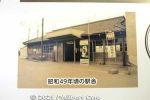
Hino Station in 1974.
|
|
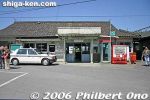
This is what Hino Station looked like before it was renovated in 2019. This old train station building was built in 1916.
|
|

Hino Station on the Ohmi Tetsudo railway before the building was renovated in 2019. On the right was the tourist info office. 近江鉄道 日野駅
|
|
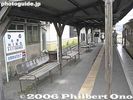
Hino Station platform on the Ohmi Testudo railway. 近江鉄道 日野駅
|
|

Inside Hino Station at night before the building was renovated in 2019. 日野駅
|
|

Hino Station platform at night. Old roof was replaced in 2019.
|
|
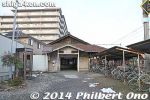
Hikoneguchi Station on the Ohmi Railways. This station building was torn down in Aug. 2014. 彦根口駅
|
|
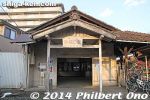
Hikoneguchi Station on the Ohmi Railways first opened in 1901 and renamed Hikoneguchi in 1917. This station building was torn down in Aug. 2014. 彦根口
|
|
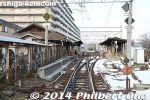
Hikoneguchi Station.
|
|
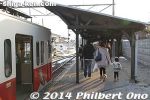
Hikoneguchi Station platform.
|
|
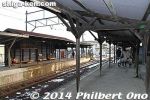
Hikoneguchi Station platform.
|
|
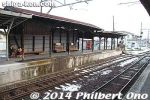
Hikoneguchi Station platform for Kibukawa.
|
|
|
|
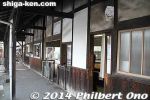
Hikoneguchi Station building before the building was torn down in Aug. 2014.
|
|
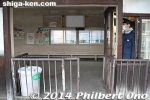
Old Hikoneguchi Station turnstile.
|
|
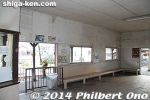
Inside Hikoneguchi Station before the building was torn down in Aug. 2014. No replacement.
|
|
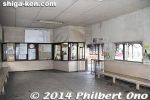
Inside Hikoneguchi Station with turnstile visible, before the building was torn down in Aug. 2014.
|
|
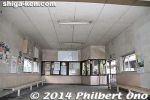
Inside Hikoneguchi Station with turnstile visible, before the building was torn down in Aug. 2014.
|
|
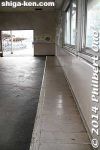
Long bench inside Hikoneguchi Station before the building was torn down in Aug. 2014.
|
|
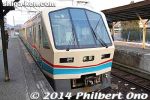
Train for Maibara at Ohmi Railways Hikoneguchi Station.
|
|
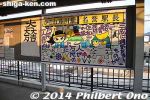
Hikone Serikawa Station. ひこね芹川駅
|
|
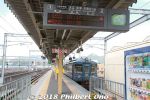
At JR Fukuchiyama Station, Kyoto Tango Railways operates a special tourist train named "Aomatsu" to Amanohashidate. It's just one train car.It's a cafe train that serves drinks and light meals.
JR Fukuchiyama Station is a major gateway to northern Kyoto Prefecture because it is a terminal station for Kyoto Tango Railway, the dominant train network in this area.
|
|
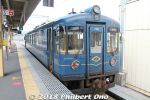
The Aomatsu train runs once every morning (10:17 am) and afternoon (3:17 pm) from Fukuchiyama Station to Amanohashidate Station and requires no reservations or extra train fare.
|
|
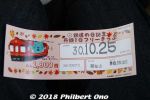
This Kyoto Tango Railways one-day train pass is a good deal.
|
|
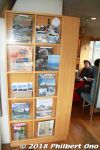
Enter the Aomatsu train and see this rack of tourist pamphlets.
|
|
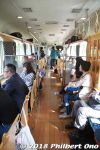
Aomatsu is special because the interior is wooden and it has a variety of seating (train fare is the same for all seats).It's a cafe train and you can order drinks (including alcohol) and light meals. No reservations required, and it's all non-reserved. Train fare is the same as regular trains.
|
|
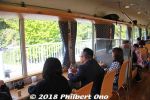
Window seats at the counter.
|
|
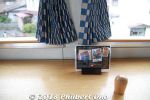
Counter seat with a knob to hold on to.
|
|
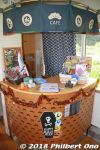
There's a staffed bar where you can order drinks and food.
|
|
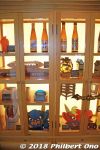
Wooden showcase.
|
|
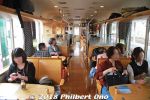
Cafe-type seats (wooden) with a table.
|
|
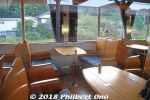
Cafe-type seats (wooden) with a table.
|
|
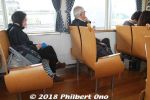
Toward the front of the train are regular seats.
|
|
|
|
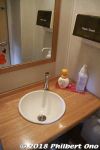
Bathroom sink.
|
|
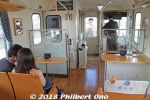
Front of the Aomatsu train.The Aomatsu train runs only twice a day from Fukuchiyama to Amanohashidate taking about an hour. Love this train.
https://trains.willer.co.jp/matsu/aomatsu.html
|
|
|
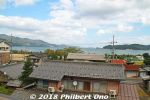
View from the Aomatsu train.Kyoto Tango Railway has another cafe train named "Akamatsu" that runs twice a day (except on Tue. and Wed.) between Nishi-Maizuru and Amanohashidate. But this train requires reservations.
https://trains.willer.co.jp/matsu/akamatsu.html
There's also the "Kuromatsu" restaurant train that runs on Fri., Sat., Sun., and national holidays. You can order a full dinner or confections or sake. The train fare includes the meal or drinks and obviously will be much more expensive than regular train fare.
https://trains.willer.co.jp/matsu/
|
|
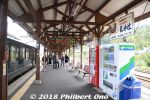
Amanohashidate Station
|
|
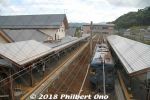
Amanohashidate Station
|
|
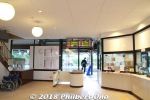
Inside Amanohashidate Station. Nice station with luggage lockers and English-speaking tourist information desk.
|
|
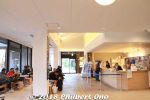
Inside Amanohashidate Station.
|
|
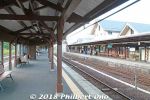
Amanohashidate Station plaform.
|
|
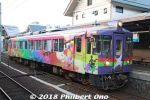
Amanohashidate area has all these neat, painted trains.
|
|
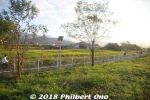
On the train back.
|
|
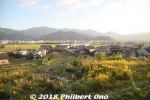
On the train back.
|
|
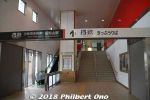
At Fukuchyama Station, the entrance to the Kyoto Tango Railway platform.
|
|

Opening in 2016, Kyoto Railway Museum is a modern makeover of the old Umekoji Steam Locomotive Museum that opened in 1972. Short bus ride from Kyoto Station.
|
|

First you see a semi-indoor display of a few trains.
|
|

80 series EMU car KuHa 86001
|
|

First-generation 0 Series shinkansen.
|
|
|
|
|
|

The museum's main highlight is the Umekoji steam locomotives on a roundabout or roundhouse next to a turntable.
|
|

This is probably the most steam locomotives you'll ever see in Japan. Some or most of them still run.
|
|
|
|
|
|
|

Turntable to direct the locomotives to the desired track and direction.
|
|
|
|

This must be Japan's largest collection of steam locomotives on diplay.
|
|
|
|
|
|

Old steam locomotive for the Imperial family.
|
|
|
|

Cleaning a steam locomotive.
|
|
|

Empty hangar for a steam locomotive.
|
|

Inside the rear of the round house.
|
|
|
|
|

Kita Biwako steam locomotive
|
|
|
|
|

Ride on a real steam locomotive for a low fare.
|
|

This real steam locomotive offers rides a few times a day.
|
|

The SL Steam runs every 15 or 30 min. from 11 am to 3:30 pm. Fare is ¥300.
|
|
|
|
|
|
|
|
|
|

Passenger car of the steam locomotive train.
|
|

The ride is only 10 min. roundtrip and the train travels for only 1 km.
|
|

Friendly workers wave to passengers riding on the steam locomotive train.
|
|
|
|

Inside Nijo Station that was moved here. Now the museum gift shop.
|
|

Nijo Station reconstructed here.
|
|

Steam locomotive repair shop.
|
|

Back to the Promenade area near the entrance with the 0 Series shinkansen.
|
|

The classic and iconic "Bullet Train."
|
|
|
|
|
|
|

The first shinkansen "Green Car" 1st class car.
|
|

Inside the first shinkansen "Green Car" 1st class car.
|
|
|

Another 0 Series shinkansen whose cockpit was open to the public.
|
|
|
|

Inside the 0 Series shinkansen driver's cockpit.
|
|

0 Series shinkansen driver's cockpit.
|
|

0 Series shinkansen driver's seat.
|
|
|
|
|
|
|
|
|
|
|
|
|
|

80 series EMU car KuHa 86001
|
|
|
|

Sleeper train
|
|

Inside a sleeper train.
|
|

Sleeper train dining car
|
|

Sleeper train dining car
|
|

Blue Train dining car
|
|

Osaka Loop Line train
|
|

Inside Osaka Loop Line train
|
|
|

EF58 150 (left) and EF81 103 (right) locomotives for sleeper trains, Twilight Plaza Zone.
|
|

EF58 150 (left) and EF81 103 (right) locomotives for sleeper trains, Twilight Plaza Zone.
|
|

Main Hall
|
|
|

500 Series shinkansen
|
|

"Raicho" Tokkyu Limited Express, KUHA489
|
|
|
|
|
|
|
|

JNR for Japan National Railways
|
|
|
|
|
|

100 series shinkansen, 2nd generation with the slit headlights and pointy look.
|
|

100 series shinkansen
|
|
|

Train kiosk from the good old days (1950s-60s).
|
|

Inside kiosk.
|
|
|
|

Kiosk owner's space.
|
|

Ice cream
|
|

Red pay phone was very common in Japan, now virtually extinct.
|
|

Reconstructed rural train station from the good old days (1950s-60s). Named "Showa-no-Eki Station."
|
|

Inside Showa-no-Eki Station.
|
|

Showa-no-Eki Station gate to platform.
|
|
|
|
|

Showa-no-Eki Station platform.
|
|
|
|

For train mechanics.
|
|
|
|
|

Daihatsu three-wheeler car
|
|
|

"Twilight Express" Sleeper train for Sapporo
|
|
|
|
|

Second floor of Kyoto Railway Museum
|
|
|
|
| 998 files on 4 page(s) |
1 |
 |
|